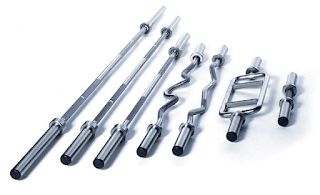What information is important to know about kettlebell before using them
With kettlebells at home, you can incorporate strength and conditioning exercises into your workout routine. A few things to keep in mind before you begin kettlebell training:
- Proper Form is Crucial:
- Acquire the proper form for every exercise to increase efficiency and lower your chance of injury.
- A lot of kettlebell workouts require swinging or ballistic motions, so it's critical to keep your form and control.
- Start with the Right Weight:
- Start with a weight that enables you to complete exercises correctly. An excessively heavy weight can result in injuries and bad form.
- If you're unsure about the appropriate weight, start lighter and gradually increase as you become more comfortable and stronger.
- Warm-Up Beforehand:
- It's important to warm up your muscles and joints before beginning a bell workout because they might be strenuous.
- Stretches that are dynamic and gentle aerobics will help your body get ready for the exercises.
- Choose the Right Kettlebell:
- There are different weights of bells, so pick the right one for the exercise you're doing and your level of fitness.
- The handle should provide sufficient space to hold both hands together, providing comfort and safety.
- Focus on Full-Body Movements:
- Bell workouts frequently work for several muscle groups, enhancing functional strength and stamina.
- Swings clean, snatches, and Turkish get-ups are examples of common exercises.
- Build Core Strength:
- To increase stability and balance, many bell exercises engage the core muscles.
- Throughout the exercises, keep your core strong to safeguard your spine and build general strength.
- Progress Gradually:
- You can move on to more difficult workouts and larger weights as you gain experience.
- Try to learn as much as you can before attempting advanced movements.
- Be Mindful of Your Surroundings:
- Since bell workouts frequently entail dynamic movements, make sure you have adequate room around you.
- Avoid collisions by being aware of other objects or people around you.
- Breathe Properly:
- Become aware of your breathing and align it with your actions.
- In general, exhale in the action phase of exercise and inhale when relaxation takes place.
- Consult a Professional:
- If you are new to training with a kettlebell or have any pre-existing health conditions, it is recommended that you consult with a personal trainer or health care professional to make sure that kettlebell training is safe for you.
Consistency is key, so listen to your body. Unless you're experiencing any discomfort other than typical muscle soreness, it's crucial to stop and review your physical abilities or consider having a fitness coach.




Comments
Post a Comment